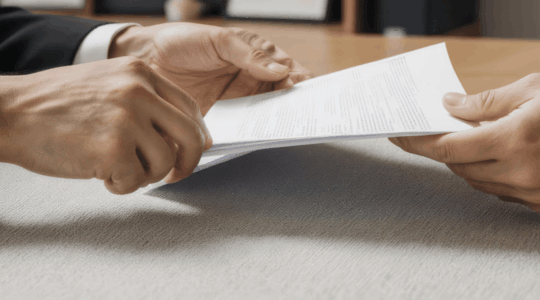Environmental
Hidden Environmental Risks: Microplastics and Nanoplastics
Pollution is an economic and insurance issue as well as an environmental risk.
February 13, 2025
Emerging contaminants are substances recently identified as potentially harmful to the environment or human health but not yet fully understood or widely regulated. Many of these contaminants arise from new technologies or industrial processes. As these substances accumulate in the environment, regulatory agencies, insurance carriers, their clients and the general public struggle to keep pace with the growing threat.
Polyfluoroalkyl and polyfluoroalkyl substances (PFAS) have been in the news for a long time. Today, microplastics and nanoplastics present a growing challenge. So, what are they, and where do they come from?
What Are Microplastics and Nanoplastics?
Microplastics are small plastic particles less than 5 millimeters in size. They often come from the breakdown of larger plastic objects like bottles and bags or everyday products like cosmetics and clothing fibers.
The story of microplastics as an emerging contaminant began in the early 2000s, but it wasn’t until 2004 that research began to illuminate just how pervasive and harmful these tiny particles are. Scientists started detecting microplastics in marine environments, especially the oceans, and they quickly realized the scope of the problem. Microplastics persist in ecosystems for centuries, absorb toxins, and wreak havoc on wildlife.
Nanoplastics are even smaller, typically less than 100 nanometers (0.1 micrometers). These particles not only form when plastics break down but can also be engineered at this scale for use in products like sunscreens and medical devices.
The scientific community recognized nanoplastics around the early 2010s. They are especially concerning because they can penetrate biological membranes, potentially enter cells, accumulate in organisms and transfer toxins in ways that microplastics cannot. While microplastics are visible and can accumulate in ecosystems, nanoplastics are far more insidious, slipping under the radar with potential health risks we still don’t fully understand.
What’s more, nanoplastics are a byproduct of microplastics. As the latter break down further over time, they can create these even smaller, more harmful particles. This means that the problem of microplastics could lead to an even more pervasive and dangerous environmental crisis.
As awareness of these contaminants grows, industries that traditionally didn’t need pollution coverage may now require it.
How Are Microplastics and Nanoplastics Created?
While there is limited information about companies intentionally producing nanoplastics, certain industries are known to contribute to their creation. They include the following:
- Plastic manufacturing companies may contribute to nanoplastics through the production or degradation of plastic products.
- Cosmetics and personal care product producers have used nanomaterials in sunscreens and exfoliating scrubs, which can break down into nanoplastics in the environment.
- Textile and clothing companies may release microfibers and nanoplastics from synthetic fabrics like polyester and nylon.
- 3D printing companies using plastic filaments could lead to the generation of nanoplastics during the printing or post-processing stages.
While these industries may not be directly producing nanoplastics, their operations play a crucial role in forming and spreading these particles.
Cleaning Up Plastic Pollution: Are We Ready?
Currently, there is no widespread cleanup regulation for microplastics or nanoplastics. While some states have begun to regulate their presence, particularly in bodies of water, the cleanup process is far from easy. Microplastics are often too small to be caught by standard filtration systems, and nanoplastics are so tiny that they are nearly impossible to remove from the environment once they’ve infiltrated.
San Francisco Bay has seen significant microplastic contamination, with over 1.1 million particles per square kilometer detected in the water. Cleanup efforts there have focused on prevention—improving wastewater treatment, researching the effects of microplastics and cleaning larger plastic debris from beaches. However, it’s clear that addressing plastic pollution requires a far more systemic approach.
Insurance Implications of These Environmental Risks
The cleanup of microplastics and nanoplastics is not just an environmental issue; it’s an economic one, too. Insurance carriers and their clients are starting to face new challenges as plastic pollution becomes a growing concern:
- Increased liability: As governments implement stricter regulations, companies involved in plastic production or waste management may face higher liabilities. Insurers will need to adapt by offering specialized coverage for environmental cleanup and legal defense costs. Similar to the widespread inclusion of PFAS exclusions in general liability forms, nanotechnology exclusions are expected to become a standard addition to general liability and pollution policies.
- Growing demand for pollution coverage: As the public and policymakers pay more attention to plastic pollution, industries like cosmetics and textiles may need more robust pollution insurance policies.
- Impact on waste management: The waste management industry may see increased liability as it is held accountable for improper disposal of plastic waste. These companies should work with their insurance carriers to manage evolving risks and comply with new regulations.
Preparing for the Future with Pollution Liability Coverage
As governments tighten regulations on plastic pollution, risk managers need to stay ahead of the curve. Businesses in plastic, cosmetic, textile and waste management industries, for example, could face increased liability. They should work with their insurance broker to determine if new or additional pollution coverage may be required.
Need help? Hylant’s environmental insurance specialists can help you identify environmental exposures and ways to eliminate or transfer these risks.
Related Reading: Navigating Environmental Risks When Establishing Start-up Operations
The above information does not constitute advice. Always contact your insurance broker or trusted advisor for insurance-related questions.


